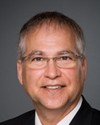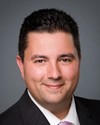Thank you, Mr. Chairman.
Through you, to the minister, first of all, I'd like to comment on the direction the government has taken in the area of science, technology, and innovation. I'm very supportive of this, as are many of the businesses in my riding that are in science, research, development, and manufacturing.
Most recently, we had an announcement about Tyne Engineering. It's an engineering company that takes hydrogen and has experimented, using the facilities at Chalk River Laboratories, to build a passive autocatalytic recombiner and actually get it to the manufacturing stage. So the scientists at Chalk River wanted to find a way to take hydrogen out of the atmosphere because they wanted to minimize the risks of explosions. The scientists worked on that, and a manufacturing business from the outside saw that they were doing this and has actually spun that business out into a new business. So we do have the holy grail of science to manufacturing and the creation of jobs occurring right up there.
Another example of how the different policies implemented are working is the situation we had a number of years ago when the NRU was shut down for repairs. As a consequence of that, the scientists had to develop the tools necessary from scratch, to even take a look at the inside of the reactor, let alone how to fix it. Because of the tools they developed, they've been able to sell those on a larger scale to other countries whose reactors are now going through the exact same thing. Again, we have another example there of how we've been able to facilitate science from the bench all the way to the manufacturing stage.
Another example is the tracking of nuclear materials. I'm very pleased to say that a team of scientists developed a way to track nuclear material around the world in real time. That team of scientists has been recognized internationally for that work, a very practical use of that development.
Another example is muon tomography. Muons are subatomic particles. They can literally provide the ability to see through steel and concrete—X-ray vision, if you will, but not X-ray as a substance. That's another example of where we're at a stage where we're looking for a company that can take this to the next phase and market it throughout the world. We're almost there. We do have a company we're looking at.
There are also non-medical isotopes. Before 9/11 we were known for providing 95% of the world's medical isotopes, but we are also capable of producing non-medical isotopes. That's quite a revenue generator for the laboratory site. I know that we are looking at funding science that can generate its own revenues as well.
With regard to materials analysis, we had our Nobel prize winner there, Bertram Brockhouse. He developed neutron spectroscopy. That has developed into a business onsite where they can look at materials, like the blades from airline turbines, in a non-invasive way, and they can see the molecular structure and where there might be a fault in the blade.
There's the non-proliferation aspect as well. Back when the SALT Treaty was being implemented, we had Russia and the United States taking down their warheads. They put the fuel, the radioactive part, into an inert form, brought it to Chalk River and we made the warheads into fuel. It was more valuable to Russia as a fuel as opposed to a weapon. In terms of non-proliferation, they're doing very well, as well as exploring and manufacturing new ways of generating electricity.
What I wanted to tell you is that the investment in the business innovation program is alive and well. If you'd like to speak to that, I'd like to hear what you have to say.






